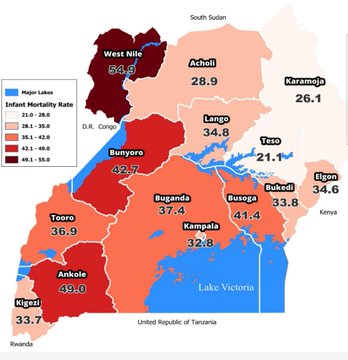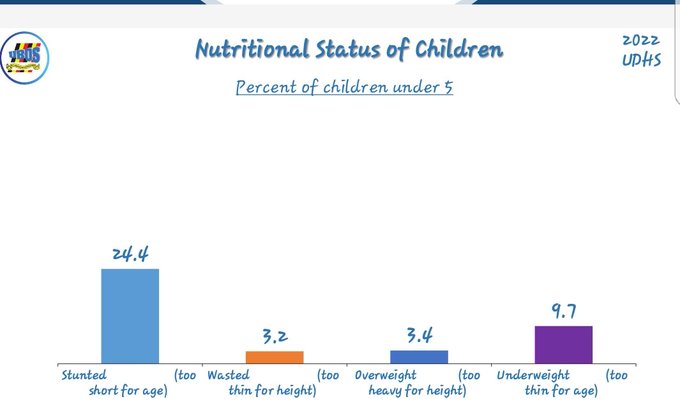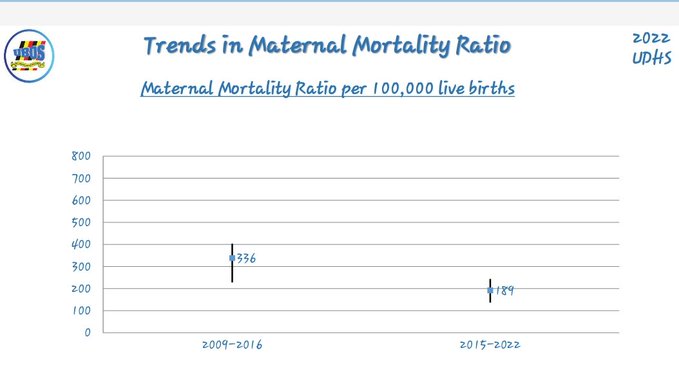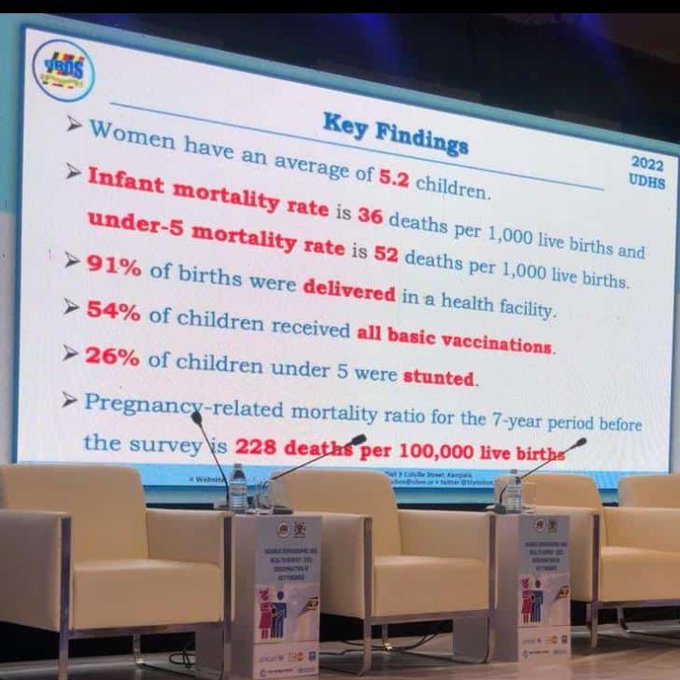The maternal mortality ratio has dropped from 336 (2009-2016) to 189 per 100,000 live births in 2022 including all deaths in the period of pregnancy irrespective of the cause.
This is according to the Uganda Demographic and Health Survey (UDHS) 2022 launched by the Uganda Bureau of Statistics (UBOS) Thursday at Kampala Sheraton Hotel.
The key findings from the report, which highlights key health indicators, show that Karamoja is the most fertile at 6.7% while Kampala is the least at 3.7%.
The current fertility stands at 5.2 children per woman; 43% of women use family planning, mostly injectables, implants and condoms 59% of married women have a demand for family planning.

Child mortality declined between 2001 and 2022; was highest in West Nile, Ankole and least in Teso. 55% of children between 12-23 months received all basic vaccinations.
According to the report, the percentage of non-vaccinated children increased from 3% to 6% in 2019/20. Malnutrition results from insufficient food intake and can lead to increased illness or death.
The report says 30% of children are stunted, 11% are underweight, 3% are wasted and 4% are overweight. More women are overweight and obese compared to men. More men are thin compared to women.

On the status of HIV/AIDS, the report says men have more knowledge of HIV and its prevention compared to women (83% and 73% respectively).
On the other hand, more women know that AIDS can be transmitted during pregnancy, delivery and breastfeeding but can be prevented by Mother-to-Child-Transmission (MTCT).
More men proceed to secondary education and beyond while more women attend primary education and fewer cross to secondary, says the report.

“It’s important to note the progress made in reduction of Maternal Mortality Ratio from 336/100,000 live births to 189/100,000 live births. 91% of all pregnant women deliver in a health facility,” said Health Minister, Dr Jane Ruth Aceng.
She added: “Reductions have also been reported in Child, Infant and Neonatal mortality. Teenage Pregnancy has stagnated at 24%. Congratulations to all Ugandans, the health workers and our partners for a good job and the continued support.”
Maternal Mortality Ratio
The 2022 UDHS asked women about the deaths of their siblings that occurred during pregnancy, delivery, or 42 days after delivery. The maternal mortality ratio excludes deaths that were due to accidents or violence. The maternal mortality ratio for the seven-year period before the survey was 189 deaths per 100,000 live births
Pregnancy-Related Mortality Ratio
The pregnancy-related mortality ratio includes all deaths in this period irrespective of the cause of death. The pregnancy-related mortality ratio for the 7-year period before the survey was 228 deaths per 100,000 live births.

SDGs update
Prevalence of stunting among children under 5 years of age, Prevalence of wasting among children under 5 years of age and Prevalence of overweight among children under 5 years of age 3.4.
Key Findings
Women have an average of 5.2 children. The infant mortality rate is 36 deaths per 1,000 live births and the under-5 mortality rate is 52 deaths per 1,000 live births. 91% of births were delivered in a health facility.
A total of 54% of children received all basic vaccinations. 26% of children under 5 are stunted.
Pregnancy-related mortality ratio for the 7-year period before the survey is 228 deaths per 100,000 live births.












